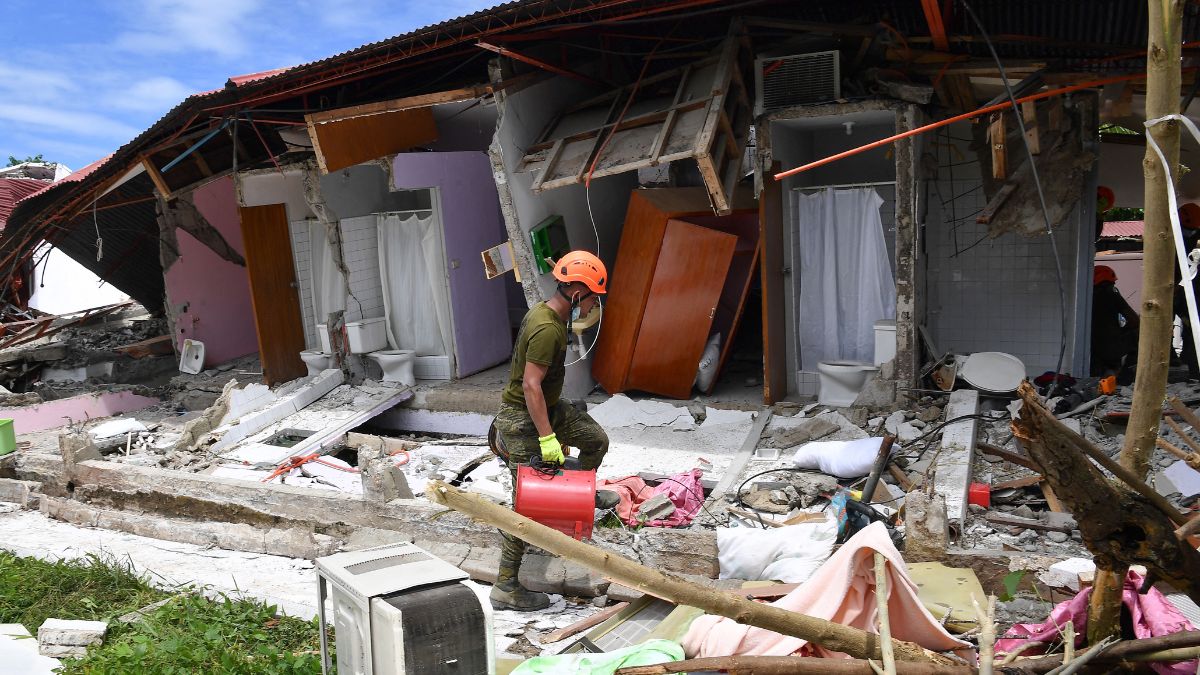At least 60 people lost their lives after a powerful 6.9-magnitude earthquake struck the central Philippines late Tuesday, leaving behind scenes of devastation and panic.
According to the United States Geological Survey (USGS), the shallow quake hit at 9:59 pm local time near Bogo City, a city of 90,000 people at the northern tip of Cebu island. Within hours, the region was rattled by at least four strong aftershocks measuring magnitude 5 or higher.
Dramatic visuals from the disaster show buildings collapsing, terrified residents running into the streets, and power lines toppling.
Among the structures destroyed was a church more than a century old. The centuries-old Parish of Saint Peter the Apostle in Bantayan partially collapsed, with videos of its outer facade crumbling and lights flickering inside being widely shared on social media.
According to AFP, Martham Pacilan, a 25-year-old resident of the resort town of Bantayan, recalled being near the town square when the quake struck.
“I heard a loud booming noise from the direction of the church, then I saw rocks falling from the structure. Luckily no one got hurt,” he said. “I was in shock and in panic at the same time, but my body couldn’t move; I was just there waiting for the shake to stop.”
Also read: Explained: How Pacific’s ‘Ring of Fire’ makes the Philippines prone to earthquakes
A viral video also showed a social media influencer, Sam Pepper, live-streaming his dinner at one of the city’s tallest buildings when a powerful quake struck. Startled by the tremors, Pepper ran downstairs with the other guests at the restaurant.
The Cebu provincial government confirmed that a commercial building and a school in Bantayan had collapsed, while several village roads were damaged.
In Bogo, the tremors cracked the concrete walls of homes, damaged roads, firefighter Rey Cañete told the AP.
“We were in our barracks to retire for the day when the ground started to shake and we rushed out but stumbled to the ground because of the intense shaking,” he said, adding that he and three other firefighters suffered cuts and bruises. Canete added that they later provided first aid to residents injured by falling debris and collapsed walls.
The National Disaster Risk Reduction and Management Council (NDRRMC) reported that 147 people were injured across the central islands. Local authorities have since declared a “state of calamity” in parts of Cebu to speed up rescue and relief operations.
“We are still assessing the damage,” Cebu governor Pamela Baricuatro said in a video posted on social media. “But it could be worse than we think.” She added that she has been in touch with the president’s office to request more aid.
The Pacific Tsunami Warning Centre said there was no tsunami threat from the quake and “no action is required”. However, the Philippine Institute of Volcanology and Seismology advised residents in Cebu, Leyte, and Biliran to avoid coastal areas due to a “minor sea level disturbance” and remain alert for unusual waves.
Earthquakes are common in the Philippines, which lies on the Pacific “Ring of Fire”, a region of frequent seismic activity stretching from Japan through Southeast Asia and across the Pacific basin.
In July 2022, a powerful 7.0-magnitude quake killed at least five people and injured 60, while in December 2023 another large quake struck the south, killing one person and forcing thousands to flee their homes.
With input from agencies
)